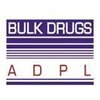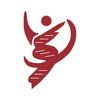Filter interviews by
Mac Chem Products ADL Chemist Interview Questions and Answers
Mac Chem Products ADL Chemist Interview Experiences
1 interview found
I applied via Referral and was interviewed in Dec 2020. There were 3 interview rounds.
Interview Questionnaire
1 Question
- Q1. About uv,chromophore,woodward fieser rules.
Interview Preparation Tips
Top trending discussions






Interview questions from similar companies

I applied via Naukri.com and was interviewed in Feb 2021. There were 3 interview rounds.
Interview Questionnaire
1 Question
- Q1. Everything around the JD
Interview Preparation Tips

Chemist Interview Questions & Answers
Steril Gene Life Sciencesposted on 24 Oct 2024
(1 Question)
- Q1. Tell me about yourself
- Ans.
I am a dedicated chemist with a passion for research and innovation, specializing in organic synthesis and analytical techniques.
Education: I hold a Ph.D. in Chemistry from XYZ University, focusing on organic chemistry.
Experience: I have 5 years of experience in pharmaceutical research, developing new drug formulations.
Skills: Proficient in techniques like NMR, HPLC, and mass spectrometry, which I used to analyze compo...

Executive Interview Questions & Answers
Pharmaffiliates Analytics Syntheticsposted on 17 Jun 2025
I appeared for an interview before Jun 2024, where I was asked the following questions.
- Q1. HPLC chromatography
- Q2. Gas chromatography
Interview Preparation Tips

Executive Interview Questions & Answers
Pharmaffiliates Analytics Syntheticsposted on 23 Jan 2021
I appeared for an interview before Jan 2020.
Interview Questionnaire
1 Question
- Q1. Basic chemistry questions and questions related to my job profile..organic synthesis and about general handling of chemicals and different reactions in lab.
Interview Preparation Tips

I applied via Walk-in and was interviewed in Sep 2022. There were 3 interview rounds.

For job related questions and answers
(2 Questions)
- Q1. About your self tell me something
- Ans.
I am a dedicated and experienced professional with a strong background in law enforcement.
I have served as a police officer for 10 years, gaining valuable experience in crime prevention and investigation.
I have received specialized training in crisis management and conflict resolution.
I am skilled in using various law enforcement technologies and tools, such as surveillance systems and firearms.
I have a proven track re...
- Q2. Why are you leave company
- Ans.
I left the company to pursue new opportunities and challenges.
Seeking career growth and advancement
Looking for a more challenging role
Exploring new industries or sectors
Relocating to a different city or country
Company downsizing or restructuring
Personal reasons or family commitments
Interview Preparation Tips

I applied via Walk-in and was interviewed in Nov 2023. There were 2 interview rounds.
(2 Questions)
- Q1. What is pH meter , How to calibrate pH meter
- Ans.
A pH meter is a scientific instrument used to measure the acidity or alkalinity of a substance. Calibration ensures accurate readings.
pH meter measures the concentration of hydrogen ions in a solution
Calibration involves adjusting the pH meter to known standard solutions
Regular calibration ensures accurate readings over time
- Q2. Explain the parts of HPLC
- Ans.
HPLC stands for High Performance Liquid Chromatography, which consists of a pump, injector, column, detector, and integrator.
HPLC involves a pump to push the liquid solvent through the system.
It includes an injector to introduce the sample into the mobile phase.
The column separates the components of the sample based on their interactions with the stationary phase.
A detector measures the amount of analyte in the eluent.
...
(2 Questions)
- Q1. What are the buffer used in HPLC
- Ans.
Buffers commonly used in HPLC include phosphate buffers, acetate buffers, and citrate buffers.
Phosphate buffers are commonly used in HPLC for separating acidic compounds.
Acetate buffers are used for separating basic compounds.
Citrate buffers are used for separating metal ions.
Other common buffers used in HPLC include ammonium acetate and ammonium formate.
- Q2. How to calibrate HPLC
- Ans.
HPLC calibration involves adjusting parameters to ensure accurate and reliable results.
Prepare standard solutions of known concentrations
Run the standard solutions through the HPLC system
Compare the results to expected values and adjust parameters as needed
Repeat the process until accurate and consistent results are obtained

I applied via Referral and was interviewed in Mar 2021. There was 1 interview round.
Interview Questionnaire
1 Question
- Q1. About my previous profile
Interview Preparation Tips
I appeared for an interview before Mar 2024, where I was asked the following questions.
- Q1. Introduce myself
- Q2. What skills do you have for this job?
- Ans.
I possess strong communication, negotiation, and analytical skills essential for driving sales and building client relationships.
Excellent communication skills: I can effectively convey product benefits to clients, as demonstrated in my previous role where I increased sales by 30%.
Strong negotiation abilities: I successfully negotiated contracts that resulted in a 15% increase in profit margins for my last employer.
Ana...
Interview Preparation Tips

Assistant Manager Interview Questions & Answers
Arbro Pharmaceuticalsposted on 24 Feb 2024
I applied via Referral and was interviewed in Jan 2024. There was 1 interview round.
(1 Question)
- Q1. Tell me about your self
Interview Preparation Tips
Tell us how to improve this page.
Mac Chem Products Interviews By Designations
- Mac Chem Products ADL Chemist Interview Questions
- Mac Chem Products Junior HR and Administrator Interview Questions
- Mac Chem Products QC Officer Interview Questions
- Mac Chem Products Research Executive Interview Questions
- Mac Chem Products Senior Electrical Technician Interview Questions
- Mac Chem Products Senior Executive Interview Questions
- Mac Chem Products Team Lead Interview Questions
Interview Questions from Similar Companies
|
Research Associate
44
salaries
| ₹2.4 L/yr - ₹5.1 L/yr |
|
Executive
15
salaries
| ₹3.4 L/yr - ₹6.2 L/yr |
|
Production Officer
14
salaries
| ₹1.3 L/yr - ₹4 L/yr |
|
ADL Officer
14
salaries
| ₹1.6 L/yr - ₹4.9 L/yr |
|
Senior Executive
13
salaries
| ₹6.4 L/yr - ₹9 L/yr |

Novartis Healthcare

Aspiro Pharma

Bajaj Healthcare

Med Manor Organics
- Home >
- Interviews >
- Mac Chem Products Interview Questions










